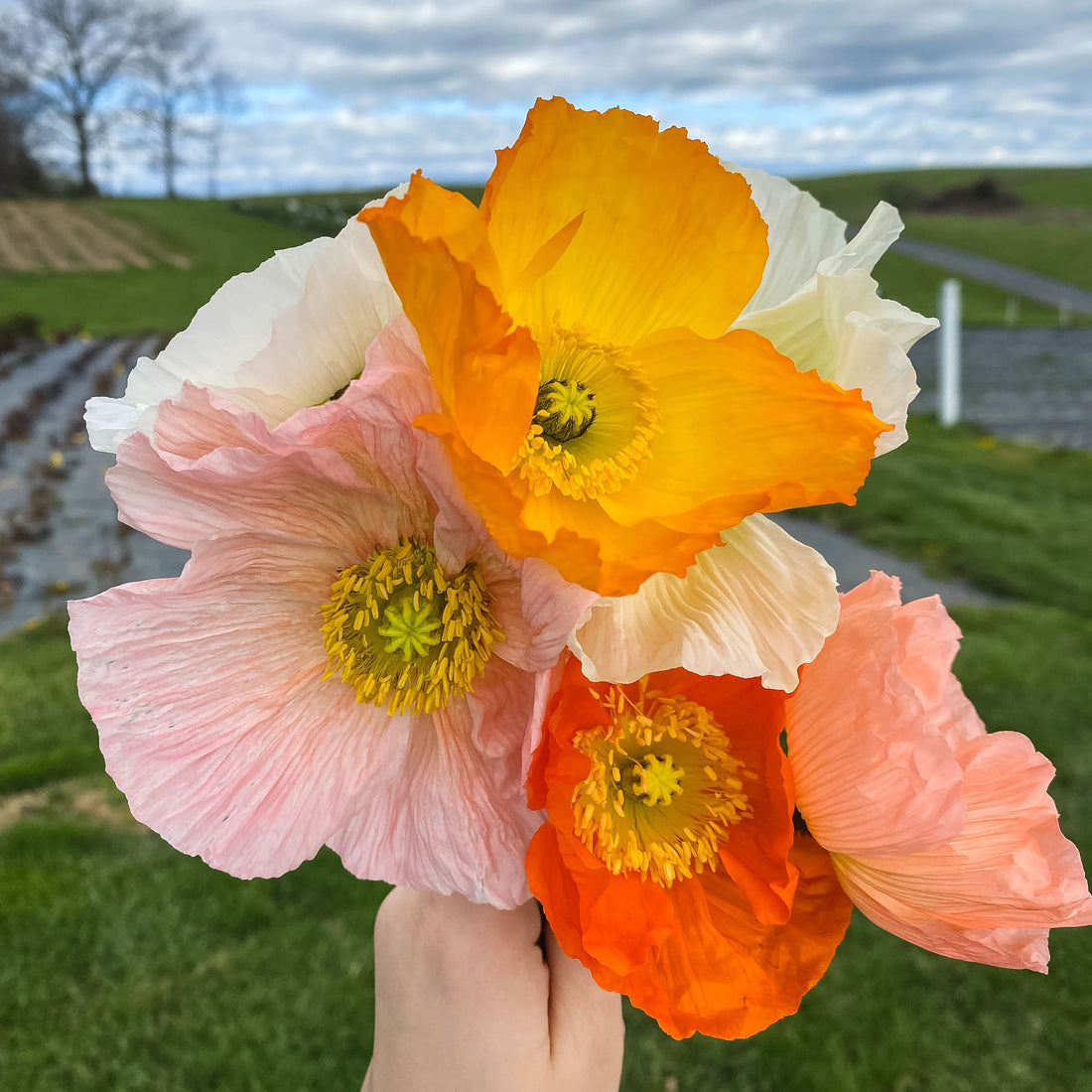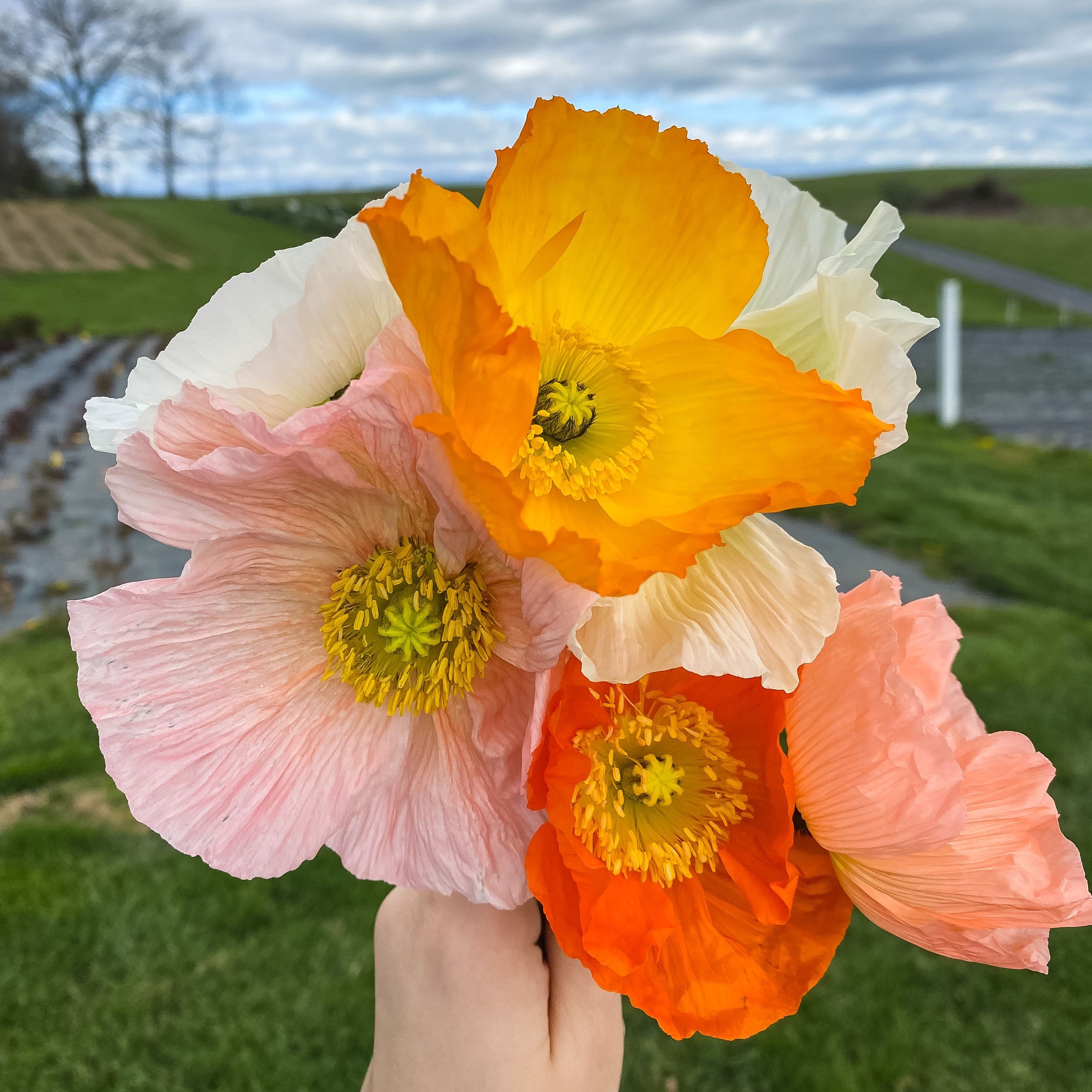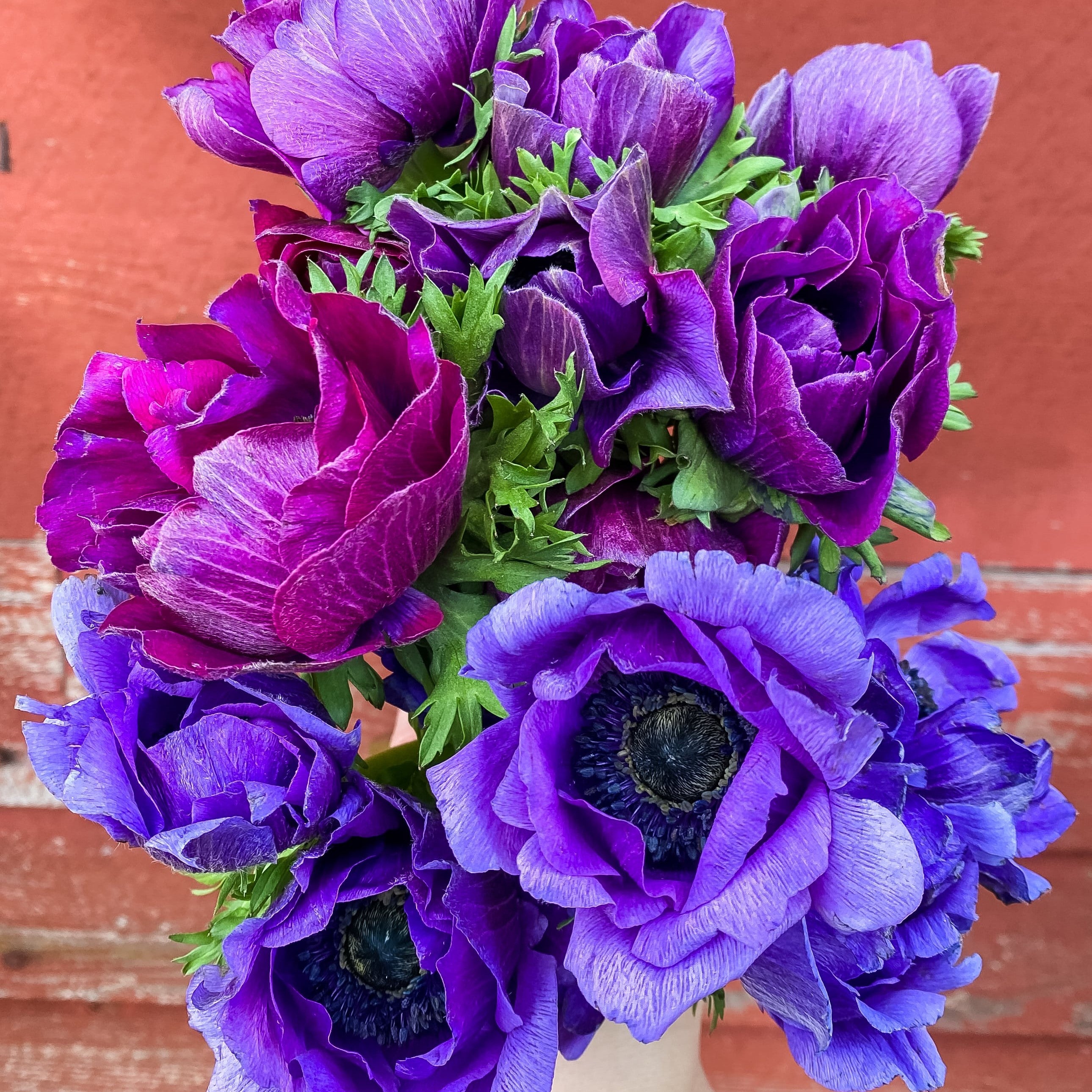Poppies are one of the more controversial flowers here at the farm. I personally love their big, ruffly petals and weird, fuzzy stems, but some people on our crew (I won’t name names) don’t care for them. They have a lot of history and symbolism (remember the poppy field scene in The Wizard of Oz?), but I’m just going to focus on the farming stuff today.
HARDINESS ZONE
Poppies will grow best in hardiness zones 2 - 8. They prefer cooler weather and can’t handle continuous hot or humid summer temperatures.
PLANTING
We plant poppies in the fall so that they’ll bloom before summer is in full swing. When planting, be sure to water well to settle the babies into their new home. Poppies want to be in soil with good drainage and if they’re overwatered, roots can rot. Watering poppies once or twice a week should be plenty during peak season if the weather is hot and dry. They don’t need to be watered in cold winter weather unless the soil goes dry. You can grow poppies in pots with good drainage as well. They’ll grow best when they receive full sun or at least 6 hours of sunlight, so plant accordingly.
 |
 |
IN BLOOM
Poppies bloom from spring into early summer. Their season isn’t very long but having plants in full shade will make it even shorter and blooms less colorful. We haven’t had any issues with diseases on our crop, but poppy blight, a fungal infection that affects leaves and stems, is a common one. Symptoms include a powdery, white-ish substance and dark spots all over the leaves and it can be treated with fungicides.
STORAGE
Poppies will reseed if they’re not ripped out of an area. You can collect seeds when the plant starts to die off (meaning the petals have dropped), leaving a harder pod that holds the seeds. You want to harvest a pod when it is brown and woody. The best time to sew the collected seeds is spring or fall, when it’s cooler. Here at the farm, we rip poppies out before they go to seed because we plant other crops in their tunnel row.
 |
 |
VARIETIES
Most of the poppies we grow are Icelandic poppies, including La Dolce Vita Mix, Pastel Mix, Hummingbird Pink, Hummingbird Orange, Hummingbird Yellow, Hummingbird White, Hummingbird Mix, and an HHF Mix. We also grow Afghan poppies (aka breadseed or opium poppies) but to dry the seed pods, not to use as cut flowers.
Poppies certainly know how to stand out when we use them in bouquets and arrangements, which earns them their classification as a mass flower. If you’re a fan like me, you can rep it with an “I Love It When You Call Me Big Poppy” shirt!





